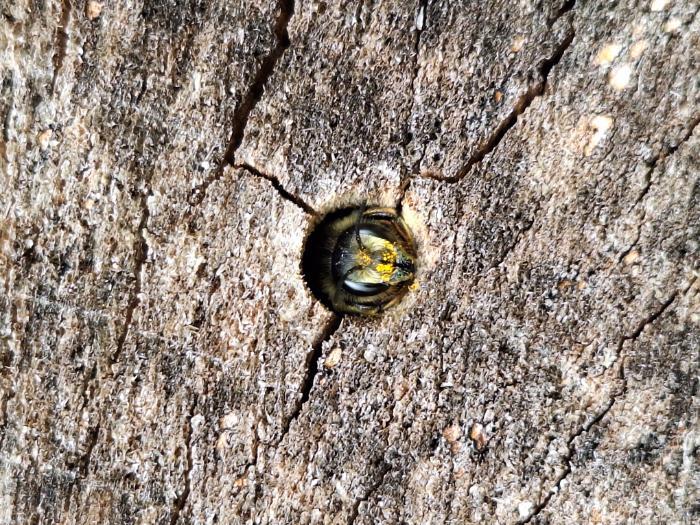08 May 2025
Why Solitary Bees love ‘No Mow May’

Science Communication and Engagement Officer, Eimear Ferguson recently caught up with Colm O’Leary, a Walsh Scholar based in Johnstown Castle, to find out why he won’t be mowing his lawn this May.
Each May, the growing call to leave lawns unmown is more than just an aesthetic preference – it is a lifeline for some of Ireland’s most overlooked pollinators: solitary bees. These small, unassuming insects make up the vast majority of Ireland’s wild bee population, yet many remain unfamiliar to the public.
A new research project presented by Colm O’Leary under the supervision of Dr. Daire Ó hUallacháin as part of Teagasc’s Crops, Environment and Land Use Programme is helping to change that.
Solitary bees- unlike their more famous relatives, the honeybee – do not live in hives or colonies. Each female bee is her own queen, laying eggs and provisioning her nest alone. Ireland is home to over 101 wild bee species, of which around 80 are solitary bees. These include ground-nesting mining bees and cavity-nesting species that call hollow stems or wood home. Collectively, solitary bees account for 95% of bee diversity globally and are essential for pollinating both wildflowers and crops.
However, one third of Irish bee species are threatened with extinction. The intensification and simplification of agricultural landscapes over the last number of decades has contributed to the reduction of suitable nesting and foraging habitats. That’s where Colm’s PhD research steps in.
Based at Teagasc Johnstown Castle and supported by a team of supervisors from Teagasc, University College Dublin and Trinity College Dublin, Colm’s work is exploring how to design effective, low-cost agri-environment measures (AEMs) specifically for solitary bees. In collaboration with the hugely successful BRIDE Project EIP, his field research has trialled two key interventions: bee scrapes (bare, south-facing soil patches ideal for mining bees) and bee hotels (man-made structures filled with hollow stems, like bamboo, for cavity nesting bees).
Across 12 farms, these features were monitored to assess the influence of surrounding floral diversity and nest site factors (soil conditions and bare soil cover for mining bees, and bee hotel positioning and cavity size for cavity nesting bees) on nesting success.
The findings emphasise how critical small habitat interventions can be. Solitary bees have a much shorter flight range (e.g. 150-600 metres) than social bee species, like the honeybee and bumblebees. This makes it vital that suitable nesting and food resources are available nearby – and precisely why ‘No Mow May’ matters. By allowing lawns, meadows and field edges to flower uninterrupted, we can provide these bees with the essential nectar and pollen they need during their short adult lives, which typically span just two to three months.
The research which also forms part of Teagasc’s Climate Centre aligns with broader policy ambitions, including the EU’s Nature Restoration Law and Article 10 of the Habitats Directive, which call for targeted conservation actions. But beyond policy, this work also connects to grassroots campaigns like ‘No Mow May’ by showing that even small changes – like skipping a mow – can create meaningful space for nature.
In short, if you want to help Ireland’s solitary bees, put down the lawnmower this May. Nature, and the bees, will thank you.
